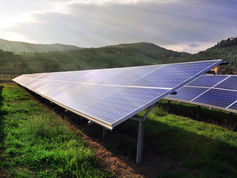Beyond Megawatts: ASEAN's Power Grid Should Not Leave Anyone Behind
- Guest Contributor
- Aug 6
- 4 min read
Authors:
Matthew Wittenstein, Chief of Energy Connectivity Section, ESCAP
Kieran Clarke, Energy Connectivity Expert, ESCAP
Yejin Ha, Economic Affairs Officer, ESCAP
As Southeast Asia’s energy demand is projected to more than double by 2050, the region faces a critical choice: build bigger, faster, and cheaper, or build smarter, fairer, and greener. The ASEAN Power Grid (APG) is a key cornerstone of this transition. It promises technical and economic gains for the region, serving as Southeast Asia's strategy for greater regional integration, energy security, economic growth, and achieving a sustainable, low-carbon future.
It’s time to shift the conversation from what power connectivity can do for the grid to what it can do for communities. Because if designed right, the APG is not just a network of cables and substations—it’s a catalyst for inclusive development, job creation, climate action, and social equity across the region.
The Limits of Megawatt Thinking
Historically, energy planning has focused on its technological economic advantages and feasibility. They are driven by cost-benefit and power system optimization, while placing emphasis on reduced system costs, enhanced grid stability, and lower carbon emissions. But they rarely tell us how these projects impact communities—how new power lines affect rural livelihoods, how energy access empowers women, or how clean energy reduces respiratory illness in urban centers.
Despite growing recognition of these broader benefits, empirical research on the wider economic, social and environmental impacts of power connectivity in South-East Asia remains limited. Some studies have begun to explore these dimensions. For example, recent modeling of the APG initiative showed that greater regional integration could lower the region's electricity costs by billions of dollars annually. A recent renewable integration assessment emphasized that interconnections can help reduce decarbonization costs by USD 800 billion. Other estimates suggest that building 30 gigawatts of new solar and wind capacity in the region could create up to 182,000 jobs in manufacturing, installation, and maintenance.

Another study concluded that regional connectivity could reduce air pollution by approximately half, preventing an estimated 15,000 premature deaths annually. To advance more inclusive planning and policymaking, ASEAN could benefit from a framework that systematically captures the multidimensional impacts of power connectivity projects. Such a framework would go beyond traditional economic models and integrate qualitative and quantitative methodologies, including, for example:
Socioeconomic Impact Assessments (SEIAs): Often used in infrastructure projects, SEIAs evaluate the potential effects on livelihoods, employment, education, health, and social dynamics.
Gender Impact Analysis: Tools such as gender audits or gender-responsive budgeting can help identify how women and men are affected by infrastructure development.
Life Cycle Assessment: Evaluates the environmental impacts of a project throughout its entire life cycle, from raw material extraction to disposal.
These are central to building a just and resilient energy future.
A Framework for People-Centered Power
To fully unlock the potential of the ASEAN Power Grid, we must adopt a more holistic framework—one that goes beyond economics to include environmental, social, and gender impacts. Power infrastructure can deliver added benefits beyond just providing electricity that are not always captured in traditional evaluations. In rural communities, building new transmission lines can lead to improved roads and related infrastructure, enhancing access to services and mobility.
ESCAP has begun developing an approach to capture the multisectoral costs and benefits of power connectivity projects through the Green Power Corridor (GPC) Framework, which includes tools and metrics to assess the alignment of power connectivity projects with the Sustainable Development Goals (SDGs). The GPC metrics enable a more granular understanding of how energy infrastructure could impact not only SDG 7 (affordable and clean energy) but all relevant SDGs, including gender equality, education, decent work, and climate action. This framework emphasizes early stakeholder consultation and integrates community engagement into the assessment process to ensure that infrastructure development reflects local needs and values.
Investing in Equity, Not Just Efficiency
South-East Asia’s energy future will benefit greatly from bold investments in regional interconnection and cooperation. But the success of power connectivity projects should not be measured by megawatts and cost savings alone. Social equity, gender inclusion, environmental sustainability, and rural development are equally important metrics of success, allowing women to access healthcare safely, farmers to power irrigation, and providing cleaner air to reduce hospital visits.
By adopting a more inclusive and holistic approach to power planning, ASEAN can lead the way, not just in regional connectivity, but in building a power system that truly works for everyone.
As the ASEAN community looks ahead to its post-2025 Plan of Action on Energy Cooperation and the signing of the Enhanced APG Memorandum of Understanding, there is an opportunity to embed this multidimensional perspective into future infrastructure planning strategies. ASEAN can lead the way in building infrastructure for regional connectivity by adopting a more inclusive and holistic approach to power planning, building a promising future for people and communities.













Comments